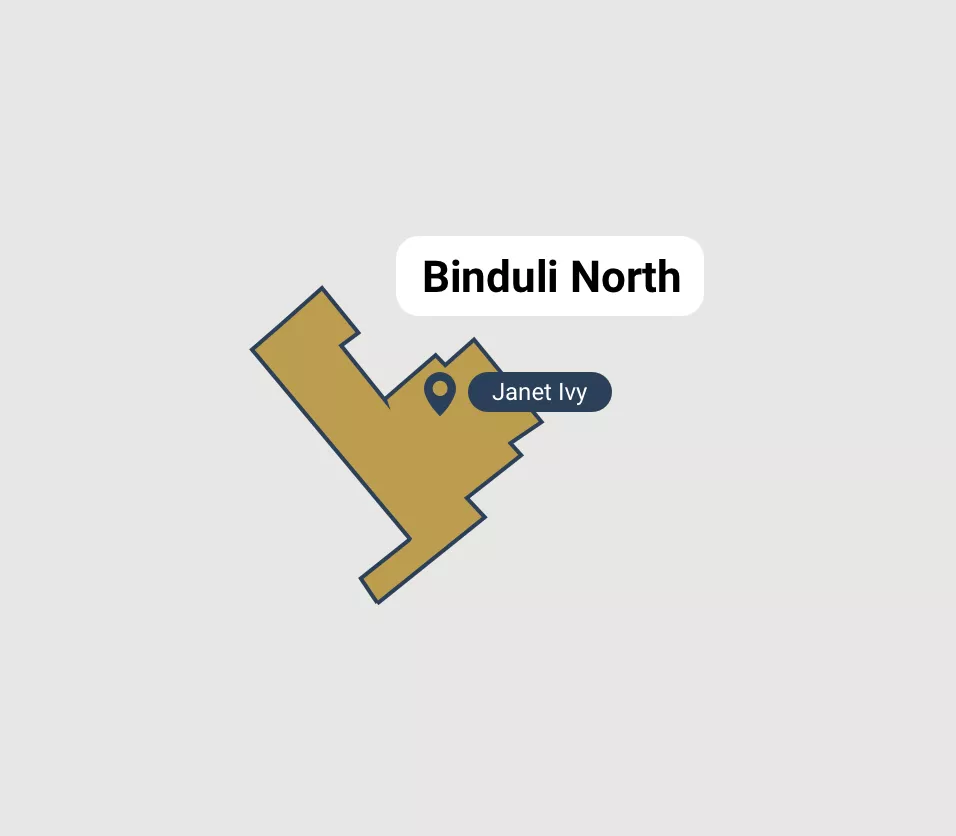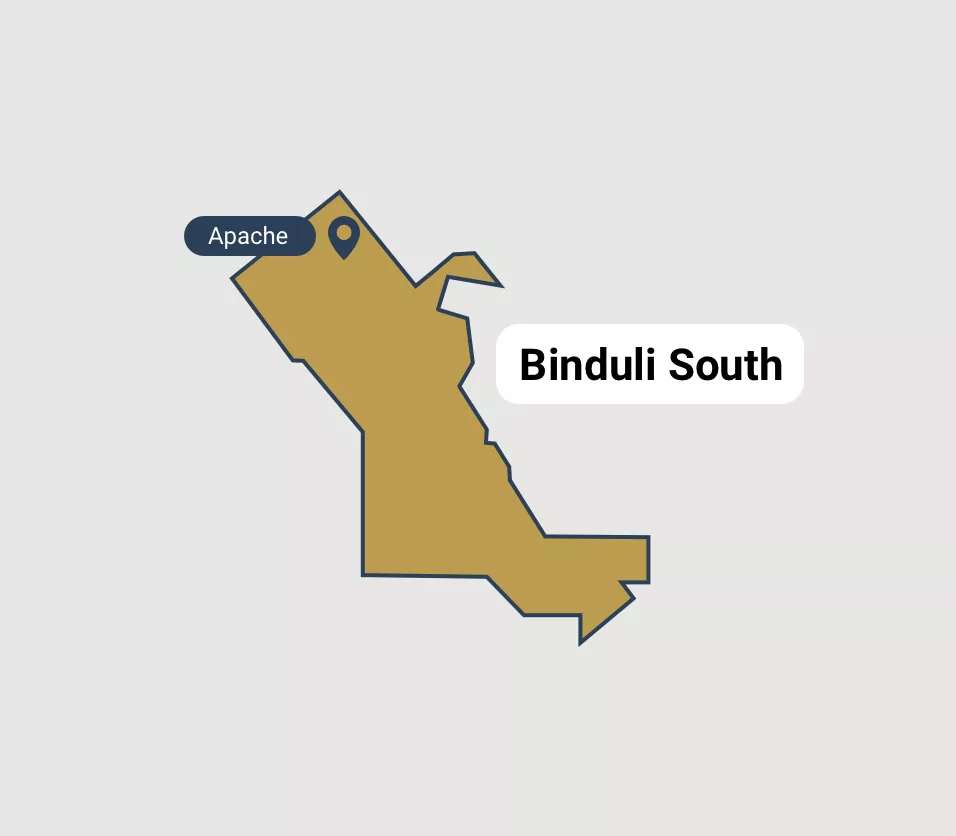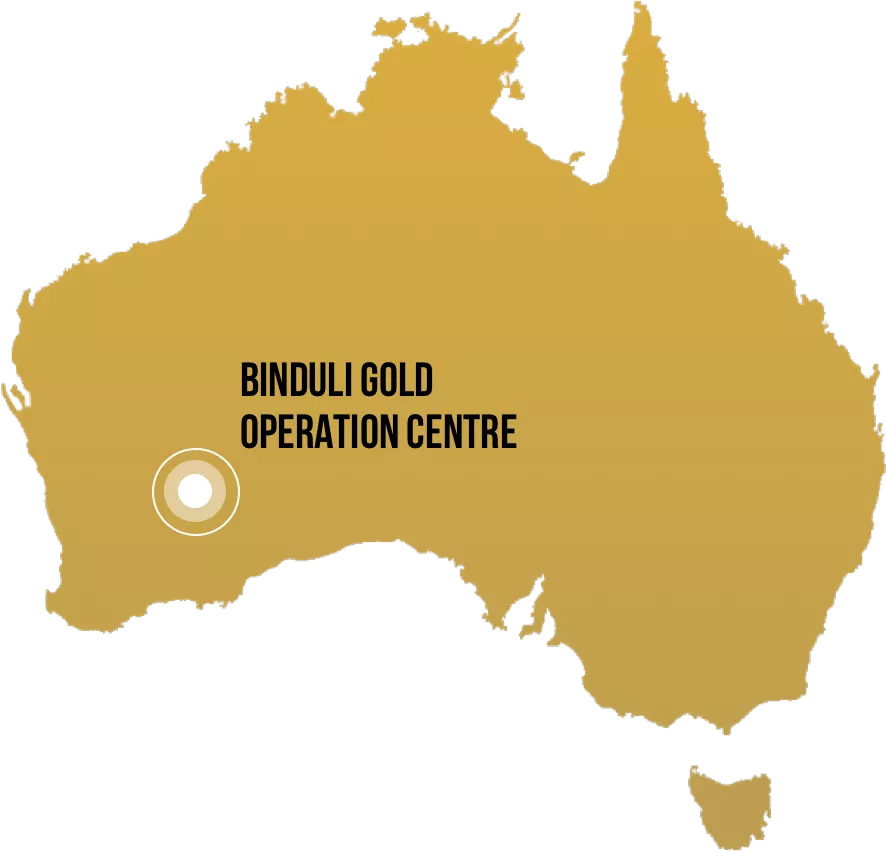Binduli Gold Operation Centre
The Binduli mining and exploration tenement package covers an area of 1,056km² within the world-class Kalgoorlie gold province. It is centered around the Binduli North Heap Leach Project which is located 10 km west of Kalgoorlie, Western Australia.
Location:
10 km West of the City of Kalgoorlie-Boulders
Mining Operations:
Binduli North Operations , Binduli South Operations
2024 Gold Production:
51,450 Oz
Operation Commencement Date:
2022
Mineral Resource:
3,129 Koz @ 31 December 2023
Ore Reserve:
1,842 Koz @ 31 December 2023
Mining Operations
Binduli North Operations
The Binduli North Operations is located 10km West of the town of Kalgoorlie. The tenements Includes the Fort William, Fort Scott, Karen Louise deposits and Janet Ivy deposits. With Janet Ivy having the most resources in the region.
Currently Binduli North Operations includes one operating project, with total resources of 1,035 Koz and reserves of 631 Koz.

Geology
The Binduli North Operation (Fort William, Fort Scott, and Karen Louise deposits) consists of three smaller open pits located along the northwest-southeast-trending Pitman-Fort William thrust fault system, which is associated with gold mineralization. The Janet Ivy deposit is controlled by fan-shaped structures near the Pitman-Fort William thrust fault system. This thrust fault system extends southward to the southern Binduli mining area, running parallel to the Centurion shear zone, which is the primary gold-bearing structure in the region.
The Fort William deposit is primarily composed of weathered layers, sediments (conglomerate, sandstone, siltstone, mudstone, and minor shale), and porphyry. Supergene mineralization is restricted to the saprolite zone, characterized by intense hematite alteration with minor pyrite. Primary gold mineralization occurs in veins within sediments and porphyry, typically associated with pyrite-sericite + hematite alteration.
The Janet Ivy deposit is a broad, strike extensive zone of mineralisation contained within a felsic porphyry intrusive. Mineralisation is controlled by a vein stockwork zone, individual fault-controlled veins, and pervasive wallrock alteration of the porphyry. Significant mineralisation extends over a 1.3km strike extent, and to an average vertical depth of 130 – 150m from surface. Mineralisation remains open along strike and at depth.
Janet Ivy Open Pit
The Janet Ivy Open Pit is a owner operated Open Pit operation which recommenced in April 2017, Our Contractor Production Team and both In-House and external Engineering Teams collaborate to extract over 4 Mtpa of Ore from the Janey Ivy Deposit.
Binduli South Operations
The Binduli South Operations is located 10km West of the town of Kalgoorlie. The Binduli South mining area consists of four primary deposits and three secondary deposits.
Currently Binduli South Operations has one operating project, with total resources of 2,094 Koz and reserves of 1,048 Koz.

Geology
The Binduli South District comprises four major deposits (Navajo Chief, Beaver, Centurion, and Ben Hur) and three minor deposits (Apache, Pitman and Walsh).
- Navajo Chief : Positioned at the northwest end of the trend, it is associated with minor brittle-ductile faults and sodium-altered siltstone, with higher gold grades found in the transition zone between the weathered and fresh rock.
- Centurion: Found in the middle of the trend, gold mineralization occurs in volcanic-sedimentary units as Eastern Contact Mineralization (ECM) and Western Contact Mineralization (WCM). ECM is associated with feldspar-rich felsic porphyries, while WCM is related to altered conglomerates and sandstones.
- Ben Hur: Situated southeast of the trend, within the footwall of the Centurion Fault. Gold mineralization occurs in porphyry breccias, folded porphyry, and clastic sediments, forming shallow, west-dipping veins in hematite-magnetite-altered feldspar-quartz porphyries.
- Apache, Pitman and Walsh: Located northeast of the NC-BE-CT-BH trend, it is nearly parallel with a northwest strike, a near-vertical dip.
This district demonstrates diverse geological controls and mineralization styles, including both primary and supergene gold deposits.
Heap Leach Project
Binduli North Heap Leach Project
The ore will be crushed on site and delivered by conveyor to the surge bin before being fed to the agglomerator drum. Agglomerated ore will be conveyed to the heap leach area via a series of grasshopper conveyors to a radial stacker which will stack the ore in a series of cells.
Loaded carbon will be transferred into an elution circuit for stripping, followed by electrowinning and smelting in an on-site gold room.

